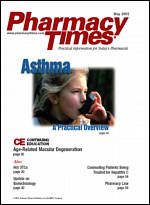Publication
Article
Pharmacy Times
May 2003: Case Study 2
An ambulance transports 2 teenagers to the local hospital. The mother of 1 of the teenagers accompanies them to the hospital. She explains that, on her return from shopping, she found her daughter acting intoxicated and the other teen passed out on the floor surrounded by vomit. She did not find any alcohol bottles near the teens but did find a bottle of antifreeze, which has the active ingredient ethylene glycol.
Laboratory results show that both teens have severe metabolic acidosis with an anion gap and ethylene glycol levels of >20 mg/dL. The hospital staff immediately begins correcting the acidosis by administering sodium bicarbonate intravenously, followed by pyridoxine 100 mg and thiamine 100 mg intravenously to promote the conversion of glyoxylate to glycine. The next step is the initiation of an intravenous ethanol bolus at 0.6 mg/kg over 45 minutes, followed by a drip to maintain a blood alcohol level of >100 mg/dL.
As the physician is explaining to the mother how they are treating the teens? antifreeze ingestion, she pulls out an empty prescription bottle from her purse. She apologizes for not mentioning that she also found her isoniazid bottle empty by the teens. Upon discovering the new information, the physician immediately returns to order additional treatments for the teens.
Which of the medications ordered will need to be administered again for the treatment of the isoniazid ingestion?
Click Here For The Answer ----------->
[-]
The recommended treatment for an isoniazid overdose is pyridoxine. Pyridoxine is given intravenously in an amount equal to the estimated isoniazid ingestion, up to 5 g, over 30 to 60 minutes. If more than 5 g is needed, pyridoxine may be administered over 1 to 2 hours.
toggle(getObject('exp1048685570_link'), 'exp1048685570');

Newsletter
Stay informed on drug updates, treatment guidelines, and pharmacy practice trends—subscribe to Pharmacy Times for weekly clinical insights.






